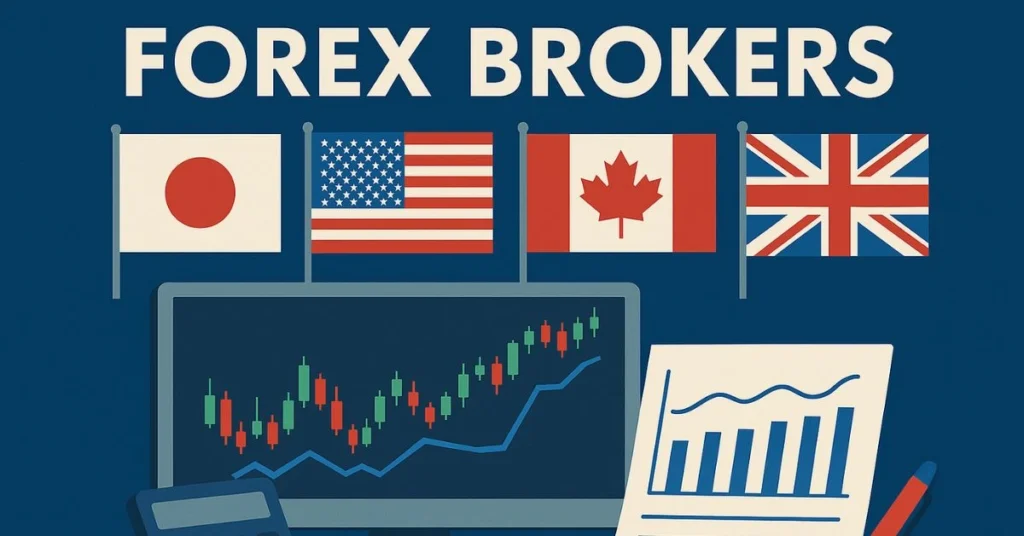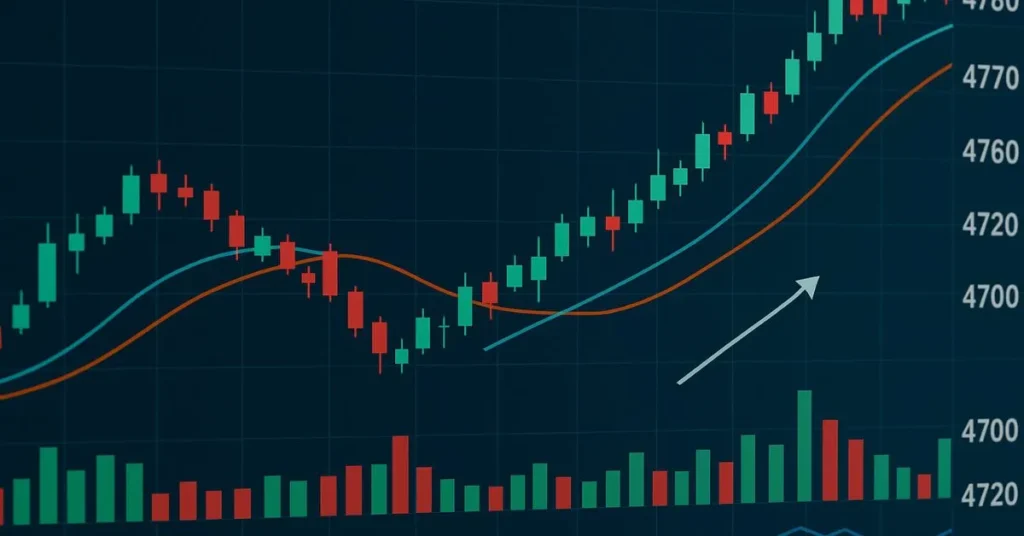The world of foreign exchange, or Forex, is a bustling marketplace where trillions of dollars change hands every day. Whether you’re a complete beginner or a seasoned trader, choosing the right Forex broker can make or break your success. In this article, we’ll explore practical tips, personal observations, and real-world examples to guide you toward brokers that align with your goals. By the end, you’ll have a clear roadmap to navigate spreads, leverage, platforms, and support effectively.
Selecting a broker isn’t a one-size-fits-all decision. Each trader’s journey in the currency pairs market hinges on individual priorities: low spreads, fast execution, intuitive trading platforms, or robust educational materials. I’ve witnessed traders boost their performance simply by switching to a broker that offered tighter spreads on EUR/USD or better customer support at odd hours. Let’s dive into the criteria, compare top contenders, and equip you with actionable strategies to thrive in Forex.
Understanding the Forex Landscape
The Forex market operates around the clock, connecting buyers and sellers from every time zone. Major currency pairs like EUR/USD, GBP/USD, and USD/JPY dominate liquidity, while exotic pairs add volatility and opportunity. Forex brokers bridge traders to interbank networks or electronic communication networks (ECNs), offering access via MetaTrader 4, MetaTrader 5, or proprietary platforms. A broker’s infrastructure—servers, data feeds, and execution model—directly impacts your trade’s fill speed and slippage, making infrastructure a crucial evaluation point.
Regulation and trust are non-negotiable. Leading jurisdictions such as the UK’s FCA, Australia’s ASIC, and Cyprus’s CySEC enforce strict capital requirements and client fund segregation. A well-regulated Forex broker not only protects your balance but also compels transparent reporting of spreads and fees. During volatile events like central bank announcements, a broker’s risk management protocols determine if you’ll face widened spreads or painful requotes. Always verify a broker’s regulatory status before funding an account.
For many traders, educational resources and community engagement define long-term success. Top brokers supplement trading platforms with webinars, strategy guides, and active forums to foster knowledge exchange. I’ve seen traders refine breakout strategies after attending a broker-hosted webinar on price action, illustrating how education can amplify real-world results. When evaluating Forex brokers, balance technical offerings with pedagogical support—your learning pathway often proves as vital as raw execution metrics.

Key Criteria for Choosing Your Broker
Spreads, commissions, and swap rates form the backbone of trading costs. A broker offering raw spreads from 0.0 pips on major pairs and a transparent $3 round-turn commission can save hundreds of dollars per month for high-frequency traders. Alternatively, a no-commission model with slightly wider spreads may suit swing traders seeking simplicity. Compare the average spread tables—often published daily—and calculate break-even points based on your typical trade size and frequency.
Leverage and margin policies dictate your risk profile. While 1:500 maximum leverage tempts with amplified gains, it equally magnifies losses. Many regulators cap leverage at 1:30 for retail clients, striking a balance between opportunity and protection. Evaluate a broker’s margin call and stop-out levels, and use a demo account to test how it handles margin requirements during volatile news releases. Discipline and position sizing guard your account against sudden equity erosion.
Customer support and account security can save you from disaster when technical issues arise. Look for multilingual, 24/5 support via live chat, email, and phone. Test response times on weekends and during high-impact events. Behind the scenes, ensure your broker implements two-factor authentication (2FA), SSL encryption, and regular audit trails. A secure, responsive broker builds confidence, letting you focus on trading strategies instead of back-office headaches.
In-Depth Broker Reviews
In this section, we center on five standout brokers—IC Markets, Pepperstone, Tickmill, Axi, and Active Trades. Each profile features a rating (up to five stars) and candid pros and cons. Whether you prioritize raw spreads, educational support, or account types, these summaries deliver clear, applicable insights.
IC Markets
Rating: ★★★★★
Pros:
- Raw spreads from 0.0 pips on major currency pairs
- True ECN execution via MT4, MT5, cTrader
- Deep liquidity with negligible requotes
Cons:
- Limited educational offerings in non-English languages
- No guaranteed stop-loss orders
IC Markets shines for scalpers and high-frequency traders who demand ultra-tight spreads and lightning-fast servers. With direct access to interbank liquidity, traders experience minimal slippage even during major announcements. Their MetaTrader environment supports algorithmic strategies and custom Expert Advisors, making it an ideal hub for hands-on Forex enthusiasts. However, if you rely on comprehensive educational modules, you might find their resource library more basic than some competitors.
Visit IC Markets: https://icmarkets.com
Pepperstone
Rating: ★★★★★
Pros:
- Competitive Forex spreads from 0.1 pips
- Award-winning customer support available globally
- Wide range of trading platforms, including cTrader
Cons:
- Inactivity fees apply after three months
- Limited product range outside currency pairs
Pepperstone balances cost-efficiency with quality service. Their Forex spreads start near zero on Razor accounts, and the Responsive Support Team has earned accolades from industry bodies. Beyond the trading floor, Pepperstone curates webinars and a strategy hub, helping traders refine price action techniques and risk management. Their proprietary platforms feature built-in trading signals and social trading integrations. On the downside, if you diversify into stocks, commodities, or indices, you may find fewer choices compared to multi-asset brokers.
Visit Pepperstone: https://pepperstone.com
Tickmill
Rating: ★★★★★
Pros:
- Ultra-low commission structure and raw Forex spreads
- Generous demo-to-live cashback programs
- Fast account verification and funding
Cons:
- No MetaTrader 5 support in all regions
- Customer service hours limited over weekends
Tickmill core appeal lies in cost-efficient execution on major and minor Forex pairs. With commission as low as $2 per side, the broker caters to precision traders who prioritize low overhead. Their liquidity partners ensure reusable depth of market data, keeping spreads tight even during Asian and U.S. sessions. Traders enjoy regular market analysis from in-house experts, bridging gaps between economic releases. However, Tickmill’s platform lineup is narrower than some, and weekend support windows can leave questions unanswered until Monday.
Visit Tickmill: https://tickmill.com
Axi Broker
Rating: ★★★★☆
Pros:
- Robust educational academy with weekly live trading sessions
- No minimum deposit for standard Forex accounts
- Dedicated account managers for high-volume traders
Cons:
- Slightly wider spreads on standard accounts
- Withdrawal fees apply in certain jurisdictions
Axi (formerly AxiTrader) stands out for its educational commitment. From foundational Forex webinars to advanced risk management tutorials, their academy arms traders with actionable skills. Standard accounts start with zero minimum deposit, lowering barriers for new entrants. High-volume clients receive personalized guidance and priority execution, helping scale professional strategies. Be mindful of marginally higher spreads on non-raw accounts, and check withdrawal charges in your region before committing. For knowledge seekers, Axi remains a solid choice.
Visit Axi: https://axi.com
Active Trades
Rating: ★★★★☆
Pros:
- Straightforward fee structure with no hidden commissions
- Regulated by FCA, offering robust client protection
- Free VPS hosting for eligible traders
Cons:
- Spreads on exotic Forex pairs can widen significantly
- Limited platform options beyond MetaTrader 4
Active Trades offers a transparent approach: you pay one clear spread, without tiered commissions or hidden charges. Their FCA regulation guarantees segregation of client funds and participation in the Financial Services Compensation Scheme. Traders benefit from free VPS hosting when they maintain minimum balances and leverage automated strategies on Forex pairs seamlessly. However, exotic pairs like USD/TRY may carry wider spreads, and the lack of MT5 or cTrader support could frustrate algorithmic traders seeking advanced charting features.
Visit Active Trades: https://activetrades.com
Strategies for Maximizing Your Trading Potential
A sound broker is only half the battle; your trading strategy fills in the rest. Consistent risk management—capping risk per trade at 1–2% of account equity—protects capital during losing streaks. Pair this with backtested systems that specify entry, exit, and stop-loss rules. For instance, a breakout strategy targeting daily highs on GBP/USD should define a maximum spread threshold to avoid choppy volatility.
Harness technical analysis tools offered by your broker’s platform—Fibonacci retracements, Ichimoku clouds, and volume indicators—to refine entries. I once combined tick volume data with MACD crossovers to catch a EUR/JPY reversal, netting a 50-pip gain. Keeping a structured trading journal—logging ticket numbers, currency pairs, timestamps, and emotional state—illuminates patterns you might otherwise miss. Over time, it becomes your most valuable edge.
Don’t overlook the power of compound interest. Starting with $1,000 and aiming for 5% monthly growth yields over $10,000 in two years. Yet, chasing outsized returns often leads to overleveraging. Use realistic monthly targets and recalibrate them as your account grows. If you hit a five-trade losing streak, temporarily reduce position size or step away to reassess market conditions. A disciplined approach aligned with your broker’s margin policies fosters sustainable growth.

Avoiding Common Pitfalls in Forex Trading
Overnight swap rates and rollovers can erode profits on long-term positions. Check your broker’s swap tables before holding AUD/JPY or NZD/USD trades past rollover. Sometimes, hedging strategies—or shifting positions into swap-free Islamic accounts—can mitigate the cost, but always calculate net carry before committing.
Emotional trading remains the silent account killer. Plenty of traders exit winners too early out of fear or let losers run due to hope. Establish pre-trade checklists and use one-click trade execution if your broker supports it. That infrastructure reduces the second-guessing that creeps in when charts flash unexpected moves. A reliable broker with stable software and low latency helps you stick to the plan.
Beware of bonus offers that sound too good to be true. Some promotions waive spreads or deposit fees temporarily but impose high volume requirements or withdrawal restrictions. Scrutinize the fine print—especially around minimum trading volumes—so you’re not stuck chasing ghosts. Focus on a broker’s core cost structure rather than fleeting incentives.
Beyond the Basics: Advanced Broker Features
Advanced traders often seek algorithmic trading support, and many brokers now offer APIs or dedicated VPS hosting to run bots 24/5. Check if your broker’s servers support Python, FIX protocol, or custom bridge solutions. I’ve seen Python-driven scalping bots capture micro-pips on EUR/USD when latency was under 5ms.
Social trading and copy-trade networks can complement your own strategies. Brokers like Pepperstone integrate with platforms such as Myfxbook and DupliTrade, allowing you to mirror seasoned Forex traders. Always vet performance over at least a 12-month period and examine drawdown metrics. Blindly following top performers without understanding their risk controls can backfire.
Partial closes and hidden orders are niche features worth exploring. If your broker allows iceberg orders, you can execute large positions without alerting the market. For institutional-style tactics, check if partial fills return visible liquidity snapshots. These advanced tools can tilt the balance in your favor, but only if you know how to wield them responsibly.
Conclusion
Choosing the best Forex broker demands a multifaceted evaluation of spreads, execution, regulation, and support. From the ultra-tight raw spreads of IC Markets to the educational riches of Axi, each broker serves different trader archetypes. Align your selection with your trading frequency, preferred currency pairs, and risk appetite, always verifying regulatory credentials and technology stacks before funding an account.
Ultimately, a broker is your partner in the market’s ebb and flow. Combine the right broker with disciplined strategies, meticulous record-keeping, and continuous learning to unlock consistent gains. As you evolve from demo to live trading, revisit your broker’s offerings regularly—new features, shifting spreads, and updated regulations can reshape the playing field. Stay curious, adaptable, and focused, and the currency market’s vast potential will unfold before you.



